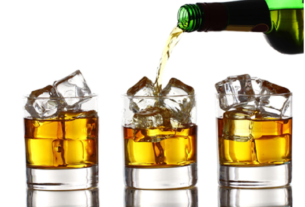Convention also states that red wines are served at room temperature whereas whites are served cold. However, for wine drinkers who prefer red wines, there’s a battle.
Suppose you need to keep consuming your red wine, but want warmer temperatures?
It’s a conundrum which never seems to go away — if you place ice cubes into your red wine you would like a cool beverage?
For dinner dates, red wines are recommended. Moreover, you can check for Envio de Desayunos
Obviously, you can do anything you prefer, but is it a fantastic alternative?
Adding ice for your own wine can be looked upon with disdain from other wine drinkers following all of the winemaker has gone to great lengths to craft the wine taste. So yes, wine equilibrium is a question of personal taste, but it’s also an issue of science.
Wine fever is an integral element in understanding how to best store and serve your own wines. The principles aren’t set in stone, however, there are numerous guides that can assist you in keeping your wine at its very best taste and prevent chemical corrosion.
Guest blogger Kate Robinson submitted the Wine Serving and Storage Temperatures 101 post, including helpful guides to its best temperatures for serving and keeping red wines.
For keeping temperatures there are no rules. For red wines, the ideal location for storage is really a dark and cool place, emptiness of sun and away from excess heat. Excessive light and heat can ruin a fantastic wine by inducing its compounds to deteriorate.

Ice Cubes in Red wine?
Robinson says that many red wines should be served at temperatures between 60F to 68F (16C to 20C). This sets the temperature below room temperature so the wine isn’t too heated.
When red wine has been served too cold it may lead to an unpleasant acidic flavor and much more prominent tannins. Reduced temperatures have a propensity to suppress the wine aroma and chemical cosmetics.
Aroma and mouth texture are two crucial elements of wine tasting. Within every glass of wine are a variety of combinations of tastes and scents, including apple, blackberries, walnut, rose petal, vanilla, and cherry (just to list a couple ). In other words, adding an ice into your own glass of red wine prevents the compounds from entering the atmosphere and providing the wine the flavor it is supposed to have.
The chilly delivered from the ice cubes can get the wine to rapidly lose its flavor.
The issue gets much more exaggerated if the melted ice provides more water into the wine further diluting the scents. This dilution also impacts the acidity and tannins in the wine which then diminishes the degree of the mouth texture.
The objective of the research was to analyze the sensory effect of the serving temperature of wines on notable wine sensory attributes. Although it’s typical practice to serve red wine at room temperature since it’s considered to boost wine odor when soothing the bitterness often found in red wines, there’s been a little scientific study that addresses the impact of serving temperatures on wine features.
Carolyn Ross also pairs up with John Reganold in developing an extremely readable bulleted informative record for wine fans. This record provides the reader with all graphs and charts describing the science behind producing and appreciating wine with a certain emphasis on the sensory experience of wine drinking.
Science or no mathematics, you only wish to appreciate your red wine chilled. There are a few other ways that you do this without seriously altering the features of this wine.





